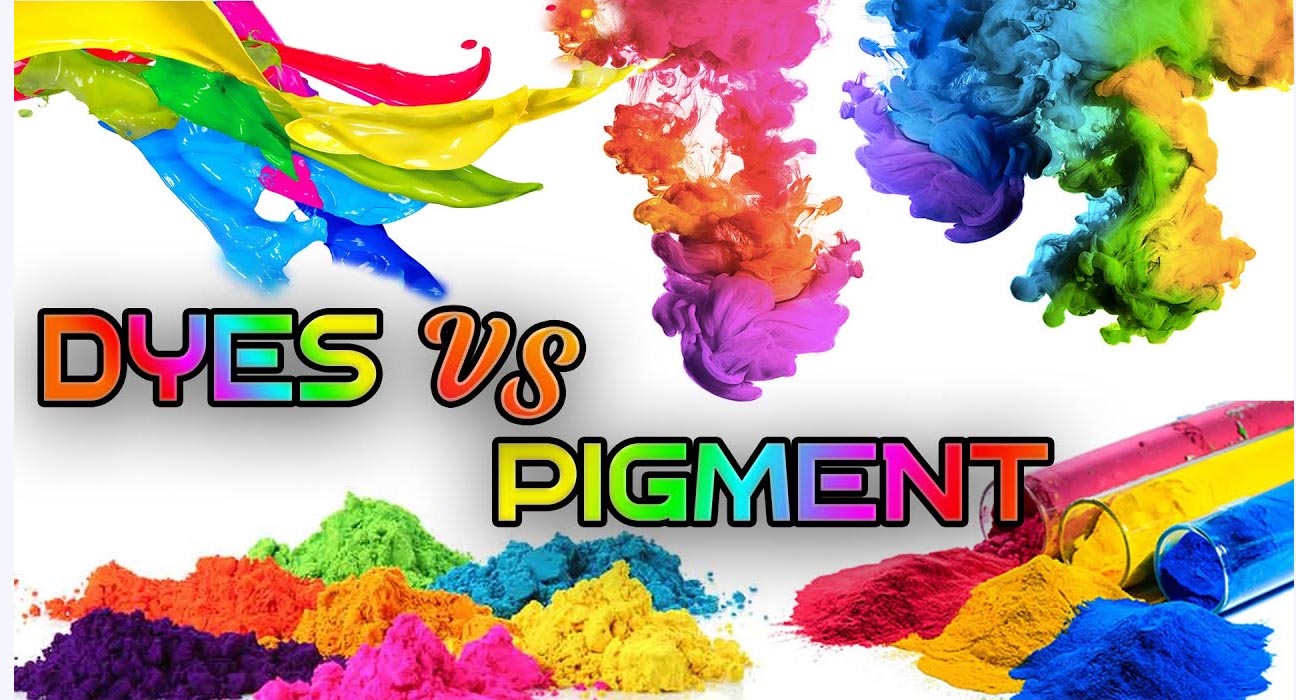The difference between dyes and pigments is their relative solubility; dyes are soluble while pigments are essentially insoluble in the liquid media in which they are dispersed. Dyes and pigments are substances that impart color to a material. The term colorant is often used for both dyes (also called dyestuffs) and pigments. Both dyes and pigments are powerful colorants. Before going to differ dyes and pigments we should know the basics of dyes and pigments and also the requirements to become a dye and pigment.
Dye Vs Pigments
What is Dye or Dyestuff?
Dyes are soluble, colored organic compounds that are usually applied to textiles from a solution in water.
They are designed to bond strongly to the polymer molecules that make up the textile fiber.
Different classes of dye are used for different types of fiber and at different stages of the textile manufacturing process. Many different dyeing processes exist in the textile industry.
Dyes are used for coloring the fabrics. Dyes are molecules that absorb and reflect light at specific wavelengths to give human eyes a sense of color.
There are two major types of dyes: natural and synthetic dyes.
Natural dyes are complex mixtures of components derived and extracted from natural substances such as plants, animals, or minerals.
Synthetic dyes are made in a laboratory. Chemicals are synthesized for making synthetic dyes. Some of the synthetic dyes contain metals too.
Difference between Dyes and Pigments
What is Pigment?
Pigments are insoluble compounds used in paints, printing inks, ceramics, and plastics. They are applied by using dispersion in a suitable medium.
Most pigments used are also organic compounds. Pigments are extensively used for coloring fabrics like cotton, wool, and other man-made fibers due to their excellent light fastness.
They do not have any affinity to the fibers and are affixed to the fabric with the help of resins. After dyeing, the fabrics are subjected to high temperatures.
Organic pigments in general have lower hiding power but greater tinting strength than inorganic pigments.
Read: Organic VS Inorganic Pigments
Difference between Dyes and Pigments in Textile:
Dyes and pigments are the most important colorants used to add color or to change the color of something. They are widely used in the textile, pharmaceutical, food, cosmetics, plastics, paint, ink, photographic and paper industries. Let’s see the basic difference.
| Dyes | Pigments |
| Dyes are colored substances that impart color to the substrate. | Pigments arc discrete colored particles which give color to the substrate. |
| Functional groups bond between dye and substrate. | Functional groups do not bond; typically need a binder. |
| Dyes are organic compounds or mixtures. | Pigments are organic or inorganic compounds. |
| Dyes are soluble in the medium. | Pigments are insoluble in the medium. |
| Auxochrome groups are present. | Auxochrome groups are absent. |
| Dyes are applied in solutions or in dispersions. | Pigments are used in suspensions. |
| The chemical constitution of dyes is important in the application. | The physical form and particle size of pigments is important in all applications. |
| Usually, dyes are organic (i.e. carbon-based) compounds. | While pigments are normally inorganic compounds, often involving heavy toxic metals. |
| The longevity of dyes is shorter. | The longevity of pigments is longer. |
| Vulnerable to fading. | Resistant against fading. |
| Often combustible. | Relatively less combustible. |
| It is costly. | It is comparatively cheaper. |
| Dyes are used for coloring textile materials, foodstuffs, paper, leather, etc. | Pigments are used for printing and used for coloring paints, and varnishes. |
| Examples: Tartrazine, Alizarin, Eosin, etc. | Examples: Indigo, Copper phthalocyanine, etc. |





